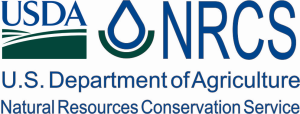After a disappointing winter, Montana water users should prepare for early, below average snowmelt runoff in streams
BOZEMAN, Mont., NRCS— Warm and dry weather patterns persisted through April. Mid and high elevations peaked during the month before transitioning to melt during the last two weeks, according to snowpack data from the USDA Natural Resources Conservation Service (NRCS).
“After high hopes that the weather patterns would turn around month after month, it turned out to be a disappointing year, snowfall-wise, in Montana,” said Lucas Zukiewicz, NRCS water supply specialist for Montana.
Snowpack conditions vary widely across the state, even within river basins. Towards the end of March or early April, low elevation measurement locations melted. Higher elevations retained the early season snow through the winter, experiencing near to slightly below normal snowpacks until the end of April. At 57 percent of normal for May 1, the Missouri River basin currently has the lowest snowpack out of the three major river basins across the state. Substantial declines, due to melt and lack of precipitation, have greatly reduced the snowpack since March 1. Currently, the Yellowstone River basin has the highest percentage of normal snowpack, but it is still only 71 percent of normal for May 1. The Columbia River basin snowpack is currently 61 percent of normal for this date.

“This year, not only did our snowpacks peak below normal, they also began the runoff season ahead of schedule as well,” Zukiewicz said. “For water users across the state, this generally means that runoff will occur earlier this year, and when it does, there will be less water.”
Streamflow Forecasts
Aside from the Columbia River basin, where above average precipitation fell in the form of rain this winter, streamflow prospects this spring and summer generally reflect the lack of snowfall. Streamflow forecasts range from near record low (42%) in the Jefferson River basin in southwest Montana to below average (80-87%) on the mainstreams of the Flathead and Kootenai River basins.
This season, river systems that do not contain reservoirs for storage, such as the Gallatin and Upper Yellowstone, will see low streamflows pass through ahead of schedule. For water users on rivers systems with reservoirs, there is water from last year’s runoff. Because of last year’s record-breaking snowfall, carryover runoff was stored, leaving most reservoirs near to above average for May 1.
Water year-to-date precipitation (October 1 – May 1) across the state is near to slightly below normal for this time, with the exception of southwest Montana. Precipitation this spring and summer will play a critical role in the volume of runoff experienced this year. East of the Divide, where overall precipitation conditions have been drier this year, May and June are favored for rain and high elevation snow.
“We are coming up on what is typically known as ‘mud season’ in the Montana mountains,” Zukiewicz said.”Usually, people dread this season, but this year I think many will welcome any spring and summer rain, just to have a mud season.”
Conditions vary widely within the river basins this year. For detailed information on individual basin conditions and streamflow forecast points refer to the May 1 Water Supply Outlook Report.
Below are the averaged river basin streamflow forecasts for the period April 1 through July 31. THESE FORECASTS ASSUME NEAR NORMAL MOISTURE AND RUNOFF CONDITIONS MAY THROUGH JULY.

Press Release USDA NRCS. Follow us on Twitter @NRCS_MT.









